The Sandy Bridge Review: Intel Core i7-2600K, i5-2500K and Core i3-2100 Tested
by Anand Lal Shimpi on January 3, 2011 12:01 AM ESTIntel HD Graphics 2000/3000 Performance
I dusted off two low-end graphics cards for this comparison: a Radeon HD 5450 and a Radeon HD 5570. The 5450 is a DX11 part with 80 SPs and a 64-bit memory bus. The SPs run at 650MHz and the DDR3 memory interface has a 1600MHz data rate. That’s more compute power than the Intel HD Graphics 3000 but less memory bandwidth than a Sandy Bridge if you assume the CPU cores aren’t consuming more than half of the available memory bandwidth. The 5450 will set you back $45 at Newegg and is passively cooled.
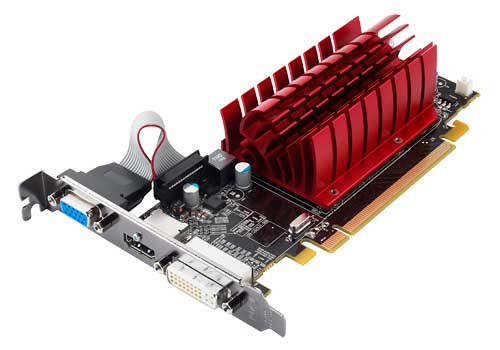
The Radeon HD 5570 is a more formidable opponent. Priced at a whopping $70, this GPU comes with 400 SPs and a 128-bit memory bus. The core clock remains at 650MHz and the DDR3 memory interface has an 1800MHz data rate. This is more memory bandwidth and much more compute than the HD Graphics 3000 can offer.
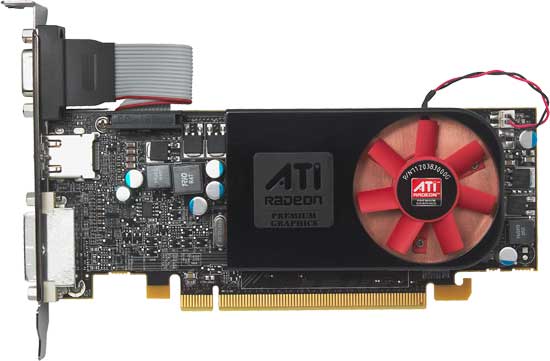
Based on what we saw in our preview I’d expect performance similar to the Radeon HD 5450 and significantly lower than the Radeon HD 5570. Both of these cards were paired with a Core i5-2500K to remove any potential CPU bottlenecks.
On the integrated side we have a few representatives. AMD’s 890GX is still the cream of the crop for AMD integrated for at least a few more months. I paired it with a 6-core 1100T to keep the CPU from impacting things.
Representing Clarkdale I have a Core i5-661 and 660. Both chips run at 3.33GHz but the 661 has a 900MHz GPU while the 660 runs at 733MHz. These are the fastest representatives with last year’s Intel HD Graphics, but given the margin of improvement I didn’t feel the need to show anything slower.
And finally from Sandy Bridge we have three chips: the Core i5-2600K and 2500K both with Intel HD Graphics 3000 (but different turbo modes) and the Core i3-2100 with HD Graphics 2000.
Nearly all of our test titles were run at the lowest quality settings available in game at 1024x768. We ran with the latest drivers available as of 12/30/2010. Note that all of the screenshots used below were taken on Intel's HD Graphics 3000. For a comparison of IQ between it and the Radeon HD 5450 I've zipped up originals of all of the images here.
Dragon Age: Origins
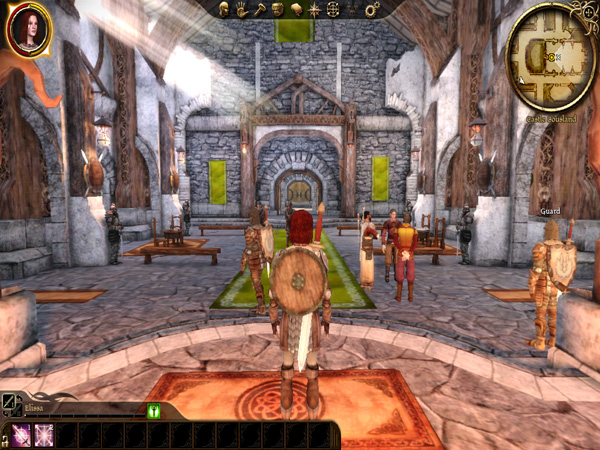
DAO has been a staple of our integrated graphics benchmark for some time now. The third/first person RPG is well threaded and is influenced both by CPU and GPU performance.
We ran at 1024x768 with graphics and texture quality both set to low. Our benchmark is a FRAPS runthrough of our character through a castle.
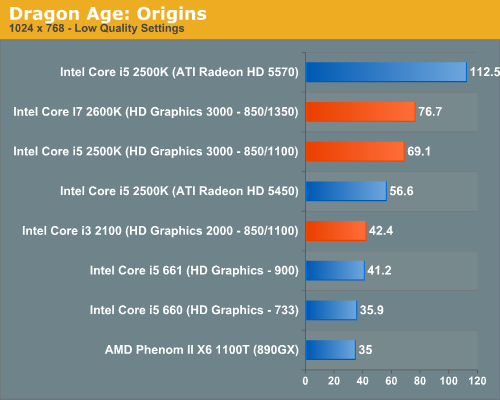
The new Intel HD Graphics 2000 is roughly the same performance level as the highest clock speed HD Graphics offered with Clarkdale. The Core i3-2100 and Core i5-661 deliver about the same level of performance here. Both are faster than AMD’s 890GX and all three of them are definitely playable in this test.
HD Graphics 3000 is a huge step forward. At 71.5 fps it’s 70% faster than Clarkdale’s integrated graphics, and fast enough that you can actually crank up some quality settings if you’d like. The higher end HD Graphics 3000 is also 26% faster than a Radeon HD 5450.
What Sandy Bridge integrated graphics can’t touch however is the Radeon HD 5570. At 112.5 fps, the 5570’s compute power gives it a 57% advantage over Intel’s HD Graphics 3000.
Dawn of War II

Dawn of War II is an RTS title that ships with a built in performance test. I ran at the lowest quality settings at 1024x768.
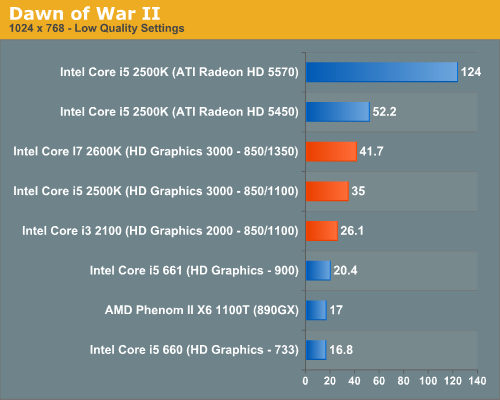
Here the Core i7-2600K and 2500K fall behind the Radeon HD 5450. The 5450 manages a 25% lead over the HD Graphics 3000 on the 2600K. It's interesting to note the tangible performance difference enabled by the higher max graphics turbo frequency of the 2600K (1350MHz vs. 1100MHz). It would appear that Dawn of War II is largely compute bound on these low-end GPUs.
Compared to last year's Intel HD Graphics, the performance improvement is huge. Even the HD Graphics 2000 is almost 30% faster than the fastest Intel offered with Clarkdale. While I wouldn't view Clarkdale as being useful graphics, at the performance levels we're talking about now game developers should at least be paying attention to Intel's integrated graphics.
Call of Duty: Modern Warfare 2

Our Modern Warfare 2 benchmark is a quick FRAPS run through a multiplayer map. All settings were turned down/off and we ran at 1024x768.

The Intel HD Graphics 3000 enabled chips are able to outpace the Radeon HD 5450 by at least 5%. The 2000 model isn't able to do as well, losing out to even the 890GX. On the notebook side this won't be an issue but for desktops with integrated graphics, it is a problem as most will have the lower end GPU.
The performance improvement over last year's Clarkdale IGP is at least 30%, and more if you compare to the more mainstream Clarkdale SKUs.
BioShock 2
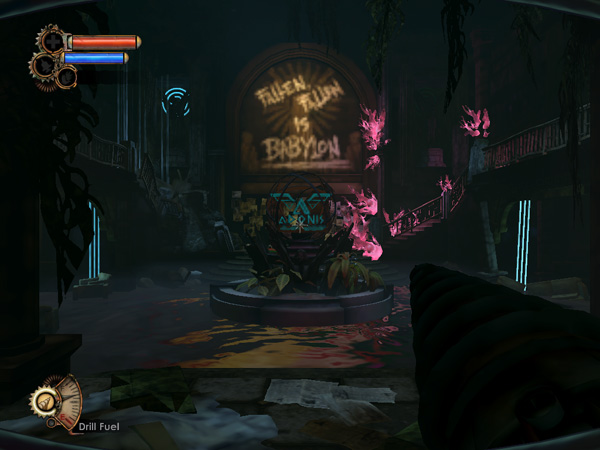
Our test is a quick FRAPS runthrough in the first level of BioShock 2. All image quality settings are set to low, resolution is at 1024x768.

Once again the HD Graphics 3000 GPUs are faster than the Radeon HD 5450; it's the 2000 model that's slower. In this case the Core i3-2100 is actually slightly slower than last year's Core i5-661.
World of Warcraft
Our WoW test is run at fair quality settings (with weather turned down all the way) on a lightly populated server in an area where no other players are present to produce repeatable results. We ran at 1024x768.
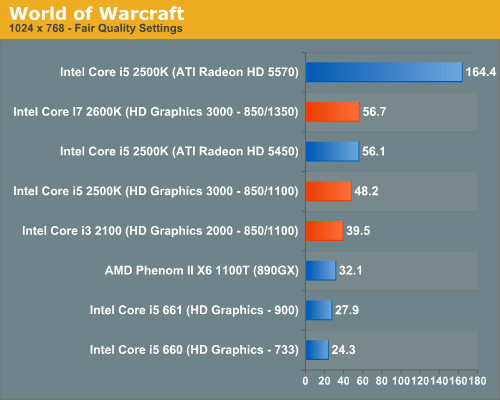
The high-end HD Graphics 3000 SKUs do very well vs. the Radeon HD 5450 once again. We're at more than playable frame rates in WoW with all of the Sandy Bridge parts, although the two K-series SKUs are obviously a bit smoother.
HAWX
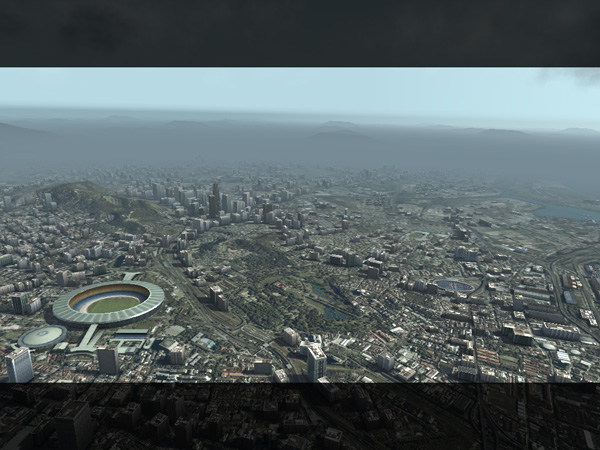
Our HAWX performance tests were run with the game's built in benchmark in DX10 mode. All detail settings were turned down/off and we ran at 1024x768.
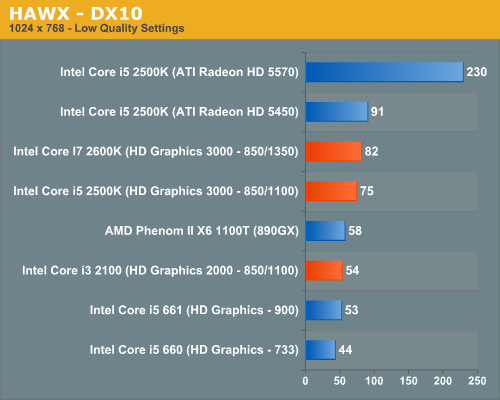
The Radeon HD 5570 continues to be completely untouchable. While Sandy Bridge can compete in the ~$40-$50 GPU space, anything above that is completely out of its reach. That isn't too bad considering Intel spent all of 114M transistors on the SNB GPU, but I do wonder if Intel will be able to push up any higher in the product stack in future GPUs.
Once again the HD Graphics 2000 GPU is a bit too slow for my tastes, just barely edging out the fastest Clarkdale GPU.
Starcraft II

We have two Starcraft II benchmarks: a GPU and a CPU test. The GPU test is mostly a navigate-around-the-map test, as scrolling and panning around tends to be the most GPU bound in the game. Our CPU test involves a massive battle of six armies in the center of the map, stressing the CPU more than the GPU. At these low quality settings, however, both benchmarks are influenced by CPU and GPU.
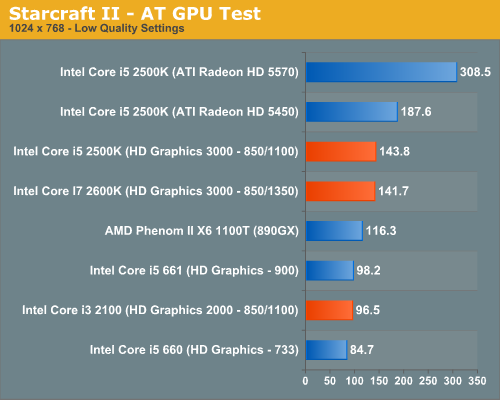
Starcraft II is really a strong point of Sandy Bridge's graphics. It's more than fast enough to run one of the most popular PC games out today. You can easily crank up quality settings or resolution without turning the game into a slideshow. Of course, low quality SC2 looks pretty weak compared to medium quality, but it's better than nothing.
Our CPU test actually ends up being GPU bound with Intel's integrated graphics, AMD's 890GX is actually faster here:
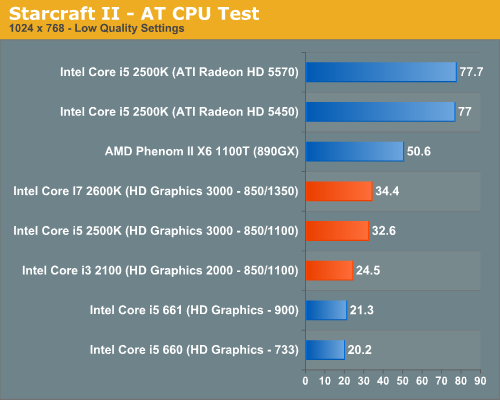
Call of Duty: Black Ops
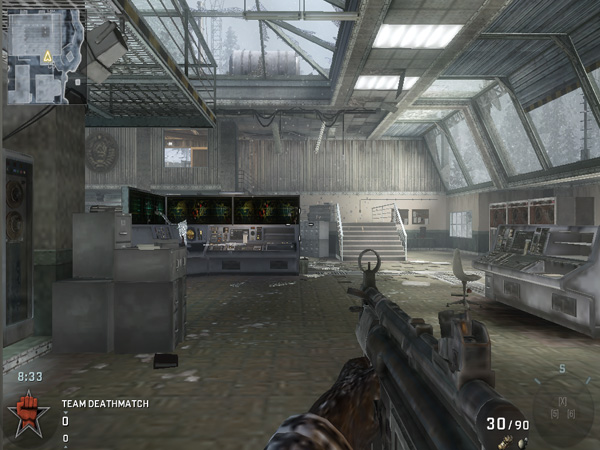
Call of Duty: Black Ops is basically unplayable on Sandy Bridge integrated graphics. I'm guessing this is not a compute bound scenario but rather an optimization problem for Intel. You'll notice there's hardly any difference between the performance of the 2000 and 3000 GPUs, indicating a bottleneck elsewhere. It could be memory bandwidth. Despite the game's near-30fps frame rate, there's way too much stuttering and jerkiness during the game to make it enjoyable.
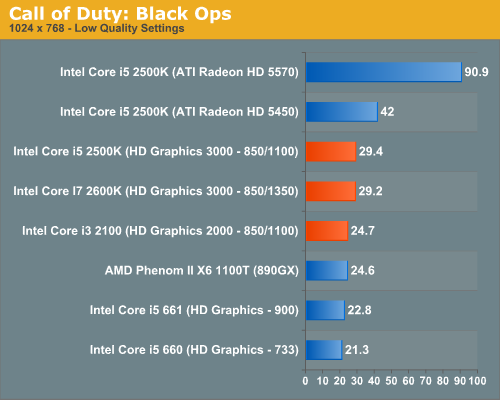
Mafia II
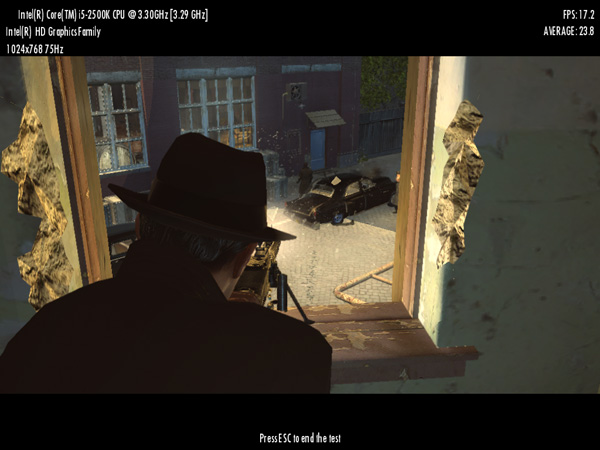
Mafia II ships with a built in benchmark which we used for our comparison.
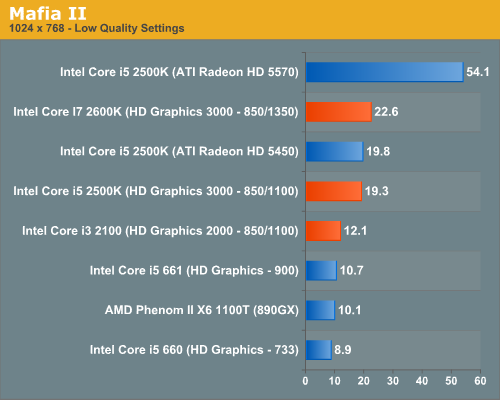
Frame rates are pretty low here, definitely not what I'd consider playable. This is a fact across the board though; you need to spend at least $70 on a GPU to get a playable experience here.
Civilization V
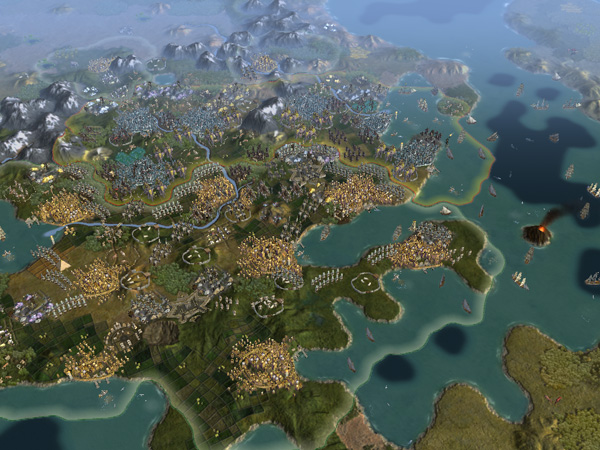
For our Civilization V test we're using the game's built in lateGameView benchmark. The test was run in DX9 mode with everything turned down at 1024x768:
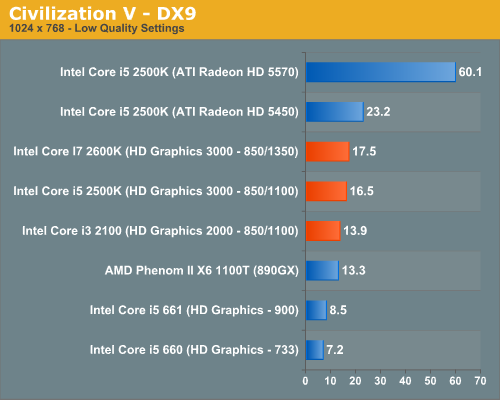
Performance here is pretty low. Even a Radeon HD 5450 isn't enough to get you smooth frame rates; a discrete GPU is just necessary for some games. Civ V does have the advantage of not depending on high frame rates, though; the mouse input is decoupled from rendering, so you can generally interact with the game even at low frame rates.
Metro 2033
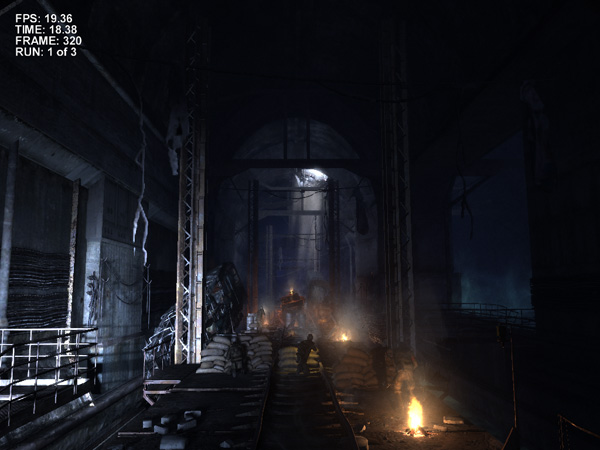
We're using the Metro 2033 benchmark that comes with the patched game. Occasionally I noticed rendering issues at the Metro 2033 menu screen but I couldn't reproduce the problem regularly on Intel's HD Graphics.
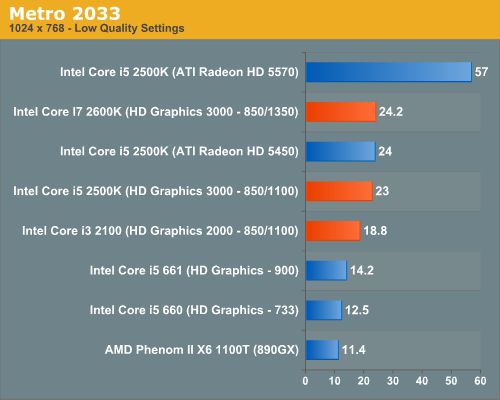
Metro 2033 and many newer titles are just not playable at smooth frame rates on anything this low-end. Intel integrated graphics as well as low-end discrete GPUs are best paired with older games.
DiRT 2
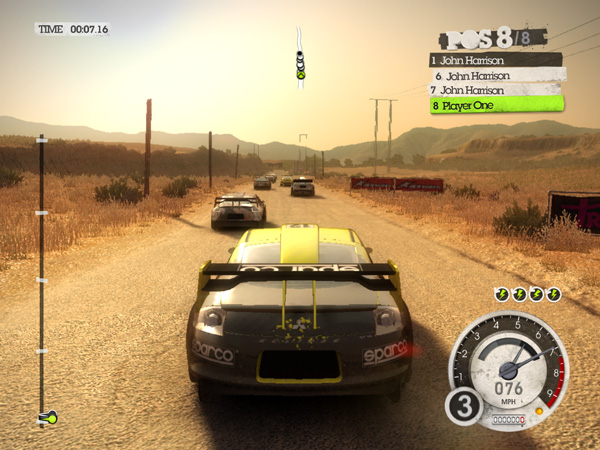
Our DiRT 2 performance numbers come from the demo's built-in benchmark:

DiRT 2 is another game that needs compute power, and the faster 2600K gets a decent boost from the higher clock speed. Frame rates are relatively consistent as well, though you'll get dips into the low 20s and teens at times, so at these settings the game is borderline playable. (Drop to Ultra Low if you need higher performance.)










283 Comments
View All Comments
DanNeely - Monday, January 3, 2011 - link
The increased power efficiency might allow Apple to squeeze a GPU onto their smaller laptop boards without loosing runtime due to the smaller battery.yuhong - Monday, January 3, 2011 - link
"Unlike P55, you can set your SATA controller to compatible/legacy IDE mode. This is something you could do on X58 but not on P55. It’s useful for running HDDERASE to secure erase your SSD for example"Or running old OSes.
DominionSeraph - Monday, January 3, 2011 - link
"taking the original Casino Royale Blu-ray, stripping it of its DRM"Whoa, that's illegal.
RussianSensation - Monday, January 3, 2011 - link
It would have been nice to include 1st generation Core i7 processors such as 860/870/920-975 in Starcraft 2 bench as it seems to be very CPU intensive.Also, perhaps a section with overclocking which shows us how far 2500k/2600k can go on air cooling with safe voltage limits (say 1.35V) would have been much appreciated.
Hrel - Monday, January 3, 2011 - link
Sounds like this is SO high end it should be the server market. I mean, why make yet ANOTHER socket for servers that use basically the same CPU's? Everything's converging and I'd just really like to see server mobo's converge into "High End Desktop" mobo's. I mean seriously, my E8400 OC'd with a GTX460 is more power than I need. A quad would help with the video editing I do in HD but it works fine now, and with GPU accelerated rendering the rendering times are totally reasonable. I just can't imagine anyone NEEDING a home computer more powerful than the LGS-1155 socket can provide. Hell, 80-90% of people are probably fine with the power Sandy Bridge gives in laptops now.mtoma - Monday, January 3, 2011 - link
Perhaps it is like you say, however it's always good for buyers to decide if they want server-like features in a PC. I don't like manufacturers to dictate to me only one way to do it (like Intel does now with the odd combination of HD3000 graphics - Intel H67 chipset). Let us not forget that for a long time, all we had were 4 slots for RAM and 4-6 SATA connections (like you probably have). Intel X58 changed all that: suddenly we had the option of having 6 slots for RAM, 6-8 SATA connections and enough PCI-Express lanes.I only hope that LGA 2011 brings back those features, because like you said: it's not only the performance we need, but also the features.
And, remeber that the software doesn't stay still, it usualy requires multiple processor cores (video transcoding, antivirus scanning, HDD defragmenting, modern OS, and so on...).
All this aside, the main issue remains: Intel pus be persuaded to stop luting user's money and implement only one socket at a time. I usually support Intel, but in this regard, AMD deserves congratulations!
DanNeely - Monday, January 3, 2011 - link
LGA 2011 is a high end desktop/server convergence socket. Intel started doing this in 2008, with all but the highest end server parts sharing LGA1366 with top end desktop systems. The exception was quad/octo socket CPUs, and those using enormous amounts of ram using LGA 1567.The main reason why LGA 1155 isn't suitable for really high end machines is that it doesn't have the memory bandwidth to feed hex and octo core CPUs. It's also limited to 16 PCIe 2.0 lanes on the CPU vs 36 PCIe 3.0 lanes on LGA2011. For most consumer systems that won't matter, but 3/4 GPU card systems will start loosing a bit of performance when running in a 4x slot (only a few percent, but people who spend $1000-2000 on GPUs want every last frame they can get), high end servers with multiple 10GB ethernet cards and PCIe SSD devices also begin running into bottlenecks.
Not spending an extra dollar or five per system for the QPI connections only used in multi-socket systems in 1155 also adds up to major savings across the hundreds of millions of systems Intel is planning to sell.
Hrel - Monday, January 3, 2011 - link
I'm confused by the upset over playing video at 23.967hz. "It makes movies look like, well, movies instead of tv shows"? What? Wouldn't recording at a lower frame rate just mean there's missed detail especially in fast action scenes? Isn't that why HD runs at 60fps instead of 30fps? Isn't more FPS good as long as it's played back at the appropriate speed? IE whatever it's filmed at? I don't understand the complaint.On a related note hollywood and the world need to just agree that everything gets recorded and played back at 60fps at 1920x1080. No variation AT ALL! That way everything would just work. Or better yet 120FPS and with the ability to turn 3D on and off as u see fit. Whatever FPS is best. I've always been told higher is better.
chokran - Monday, January 3, 2011 - link
You are right about having more detail when filming with higher FPS, but this isn't about it being good or bad, it's more a matter of tradition and visual style.The look movies have these days, the one we got accustomed to, is mainly achieved by filming it in 24p or 23.967 to be precise. The look you get when filming with higher FPS just doesn't look like cinema anymore but tv. At least to me. A good article on this:
http://www.videopia.org/index.php/read/shorts-main...
The problem with movies looking like TV can be tested at home if you got a TV that has some kind of Motion Interpolation, eg. MotionFlow called by Sony or Intelligent Frame Creation by Panasonic. When turned on, you can see the soap opera effect by adding frames. There are people that don't see it and some that do and like it, but I have to turn it of since it doesn't look "natural" to me.
CyberAngel - Thursday, January 6, 2011 - link
http://en.wikipedia.org/wiki/Showscan